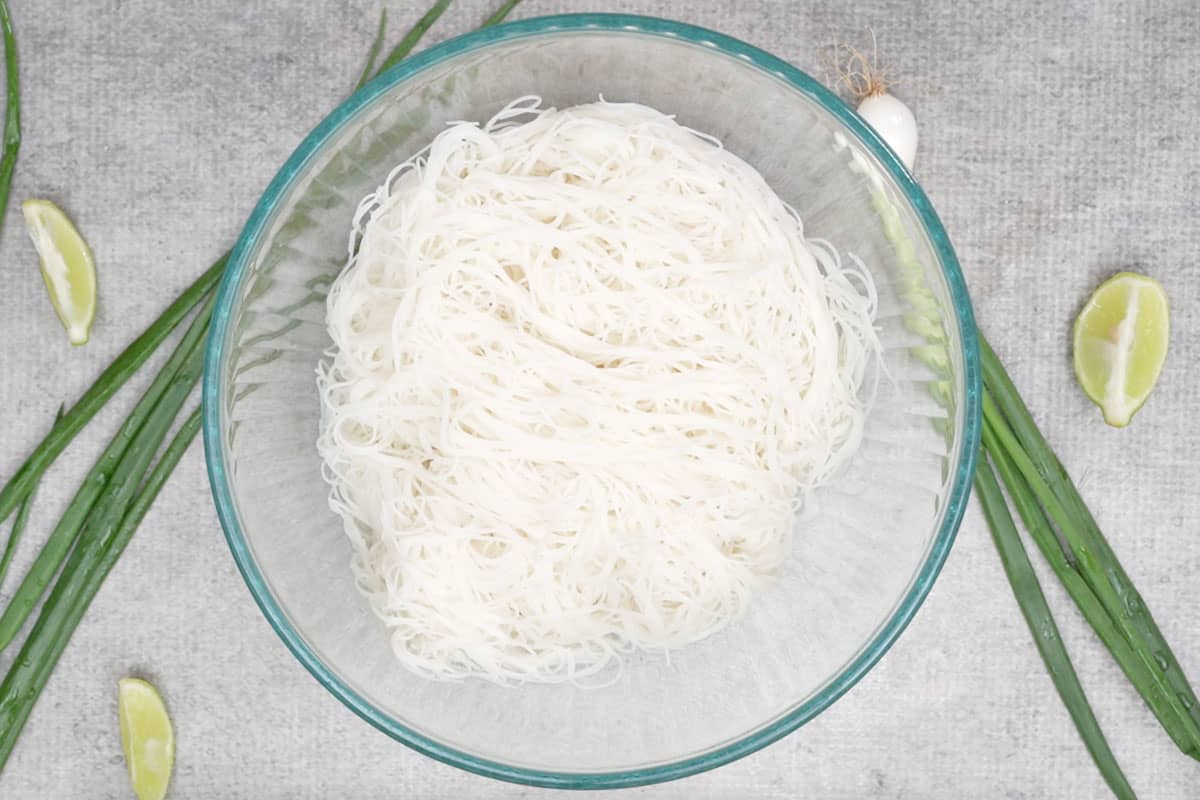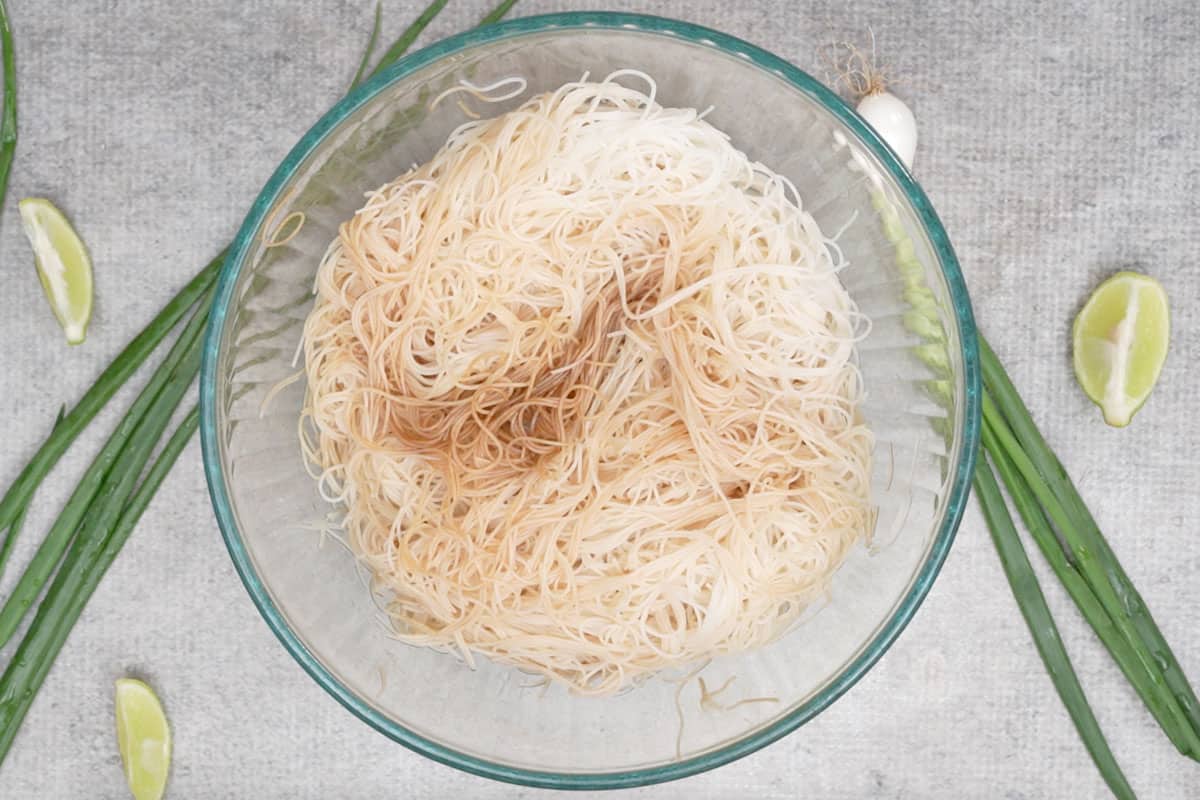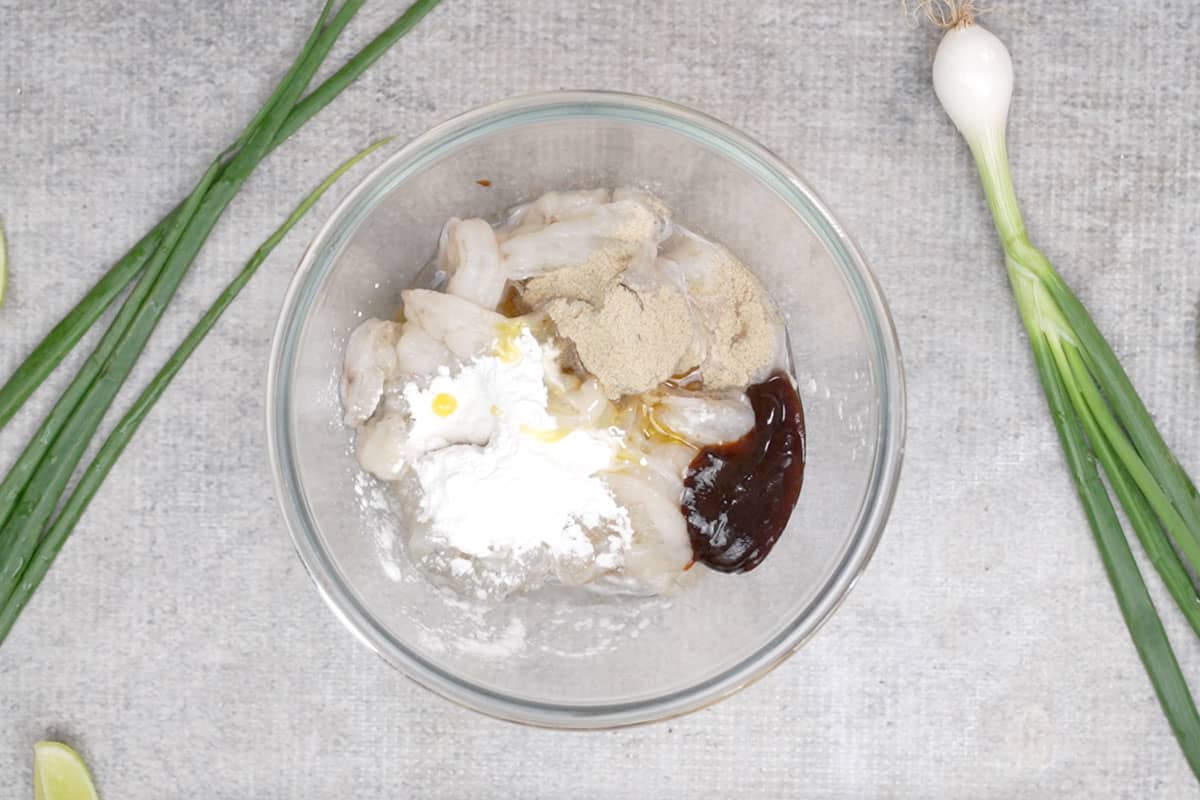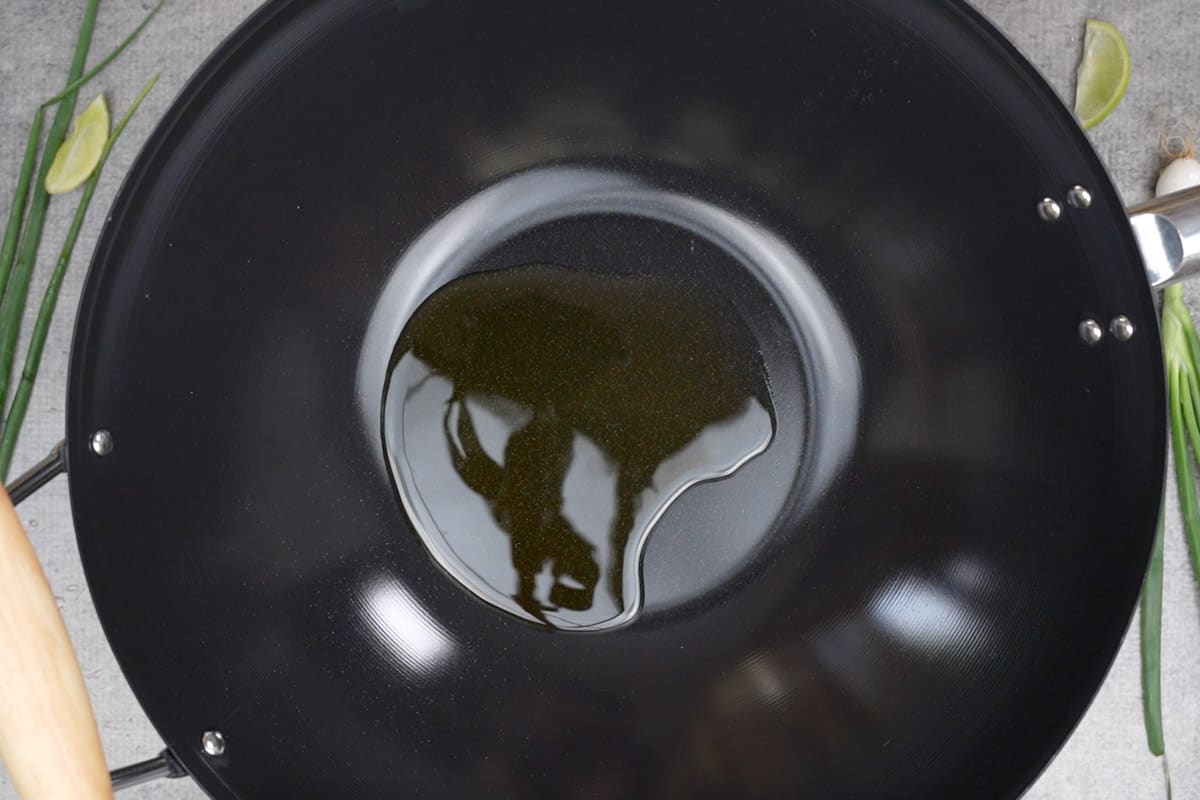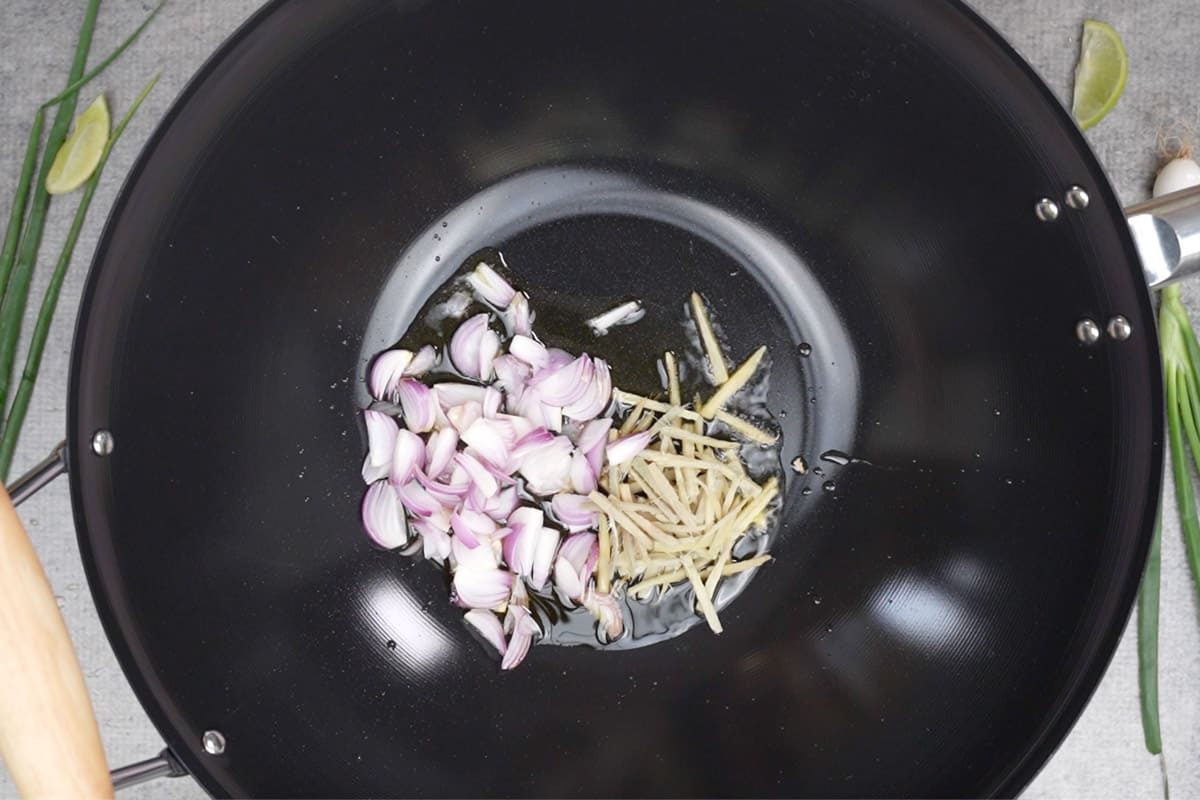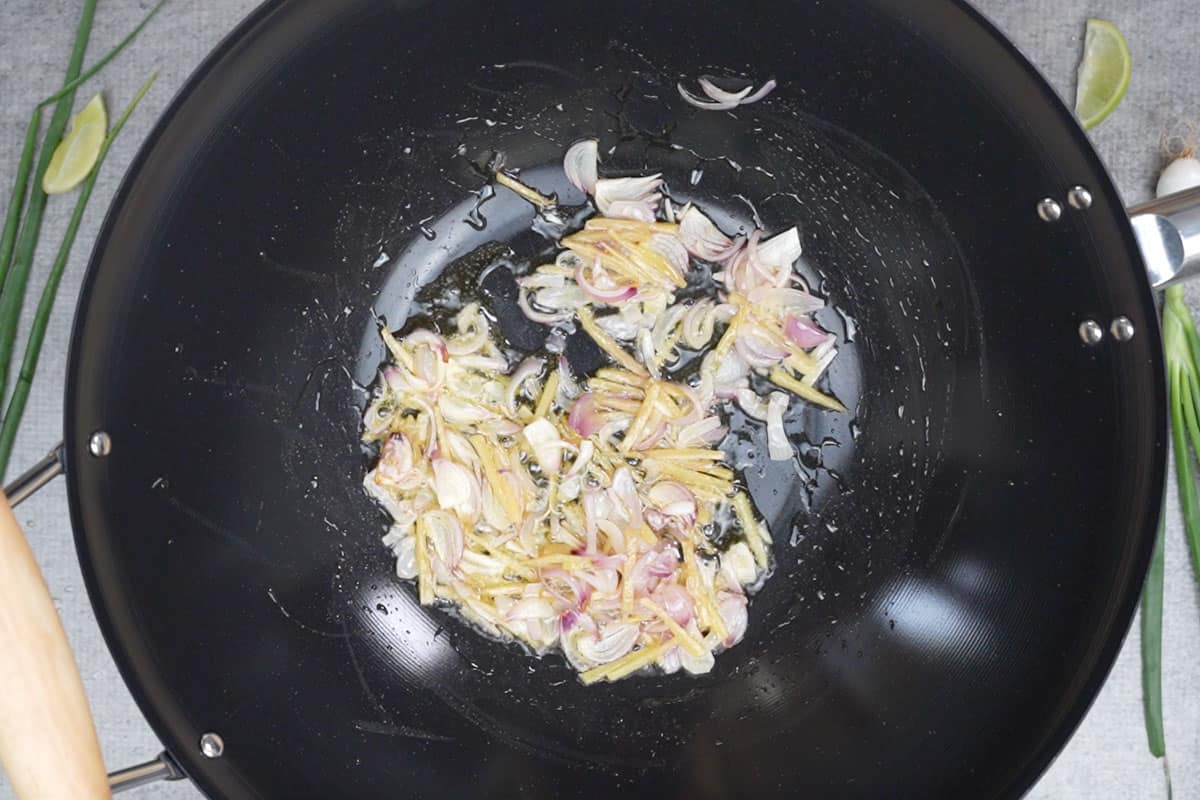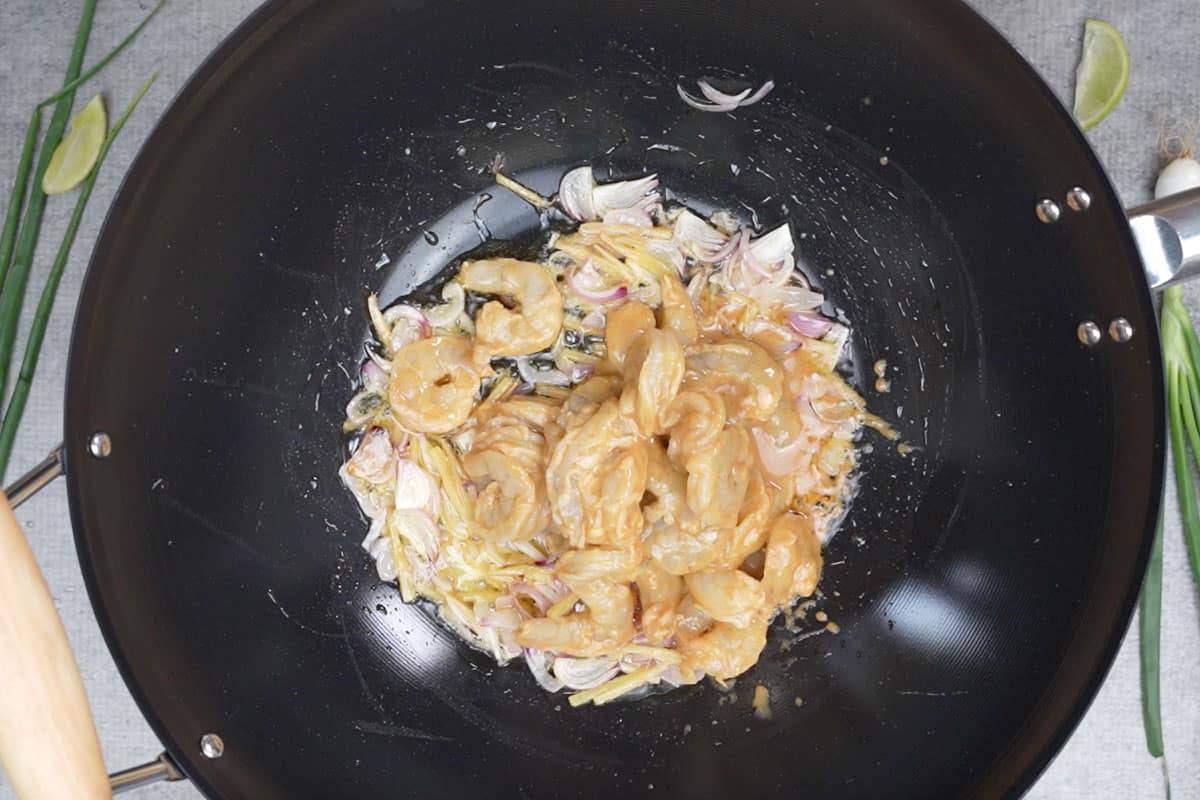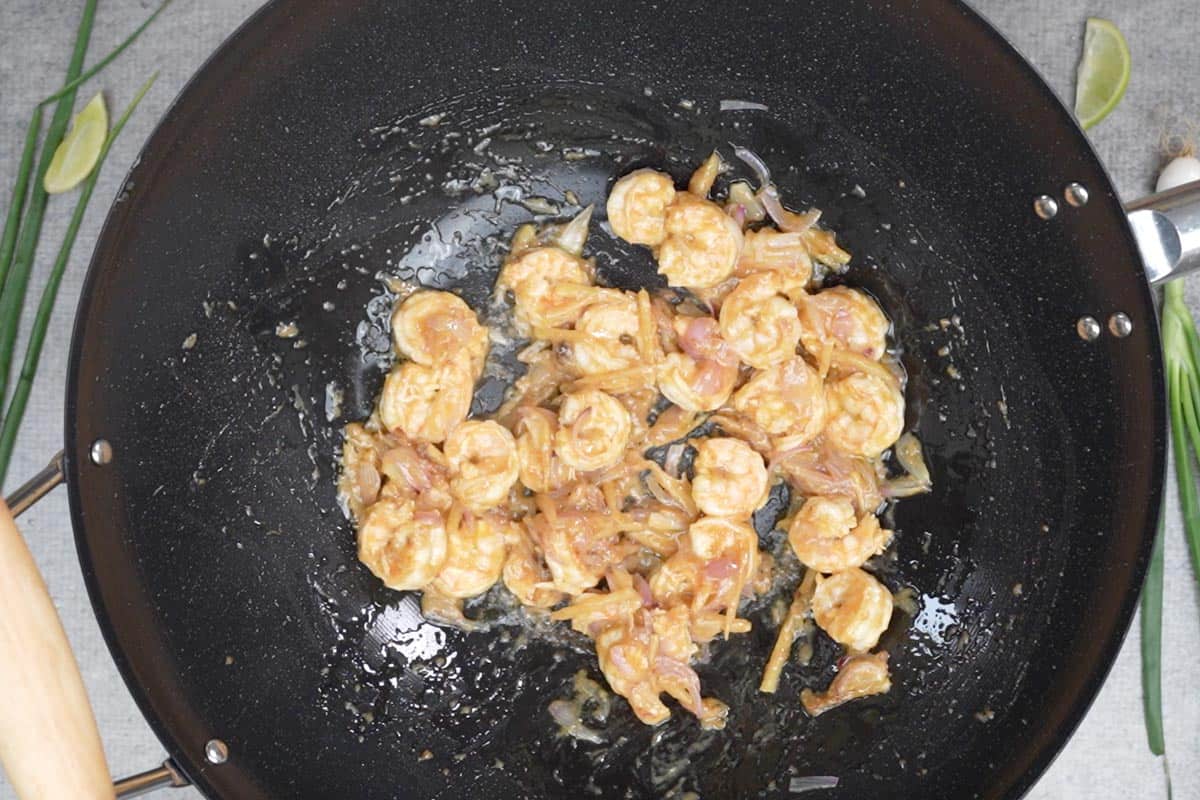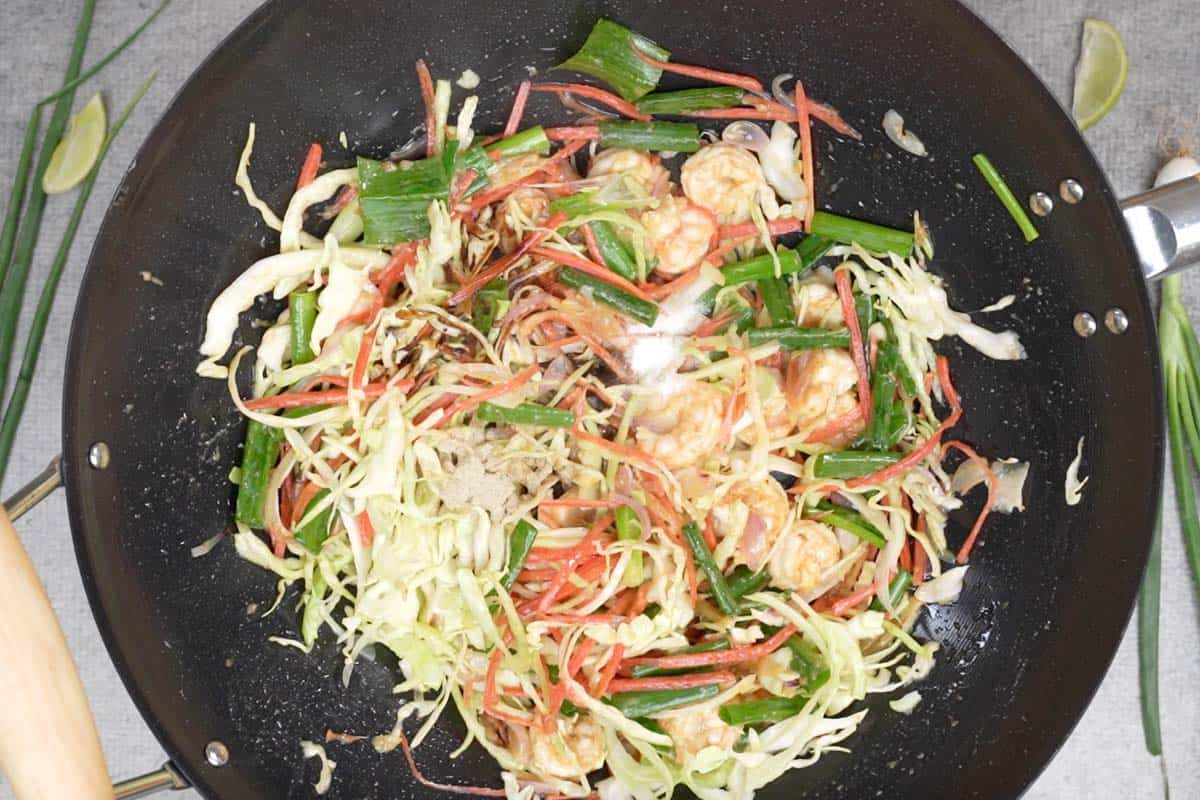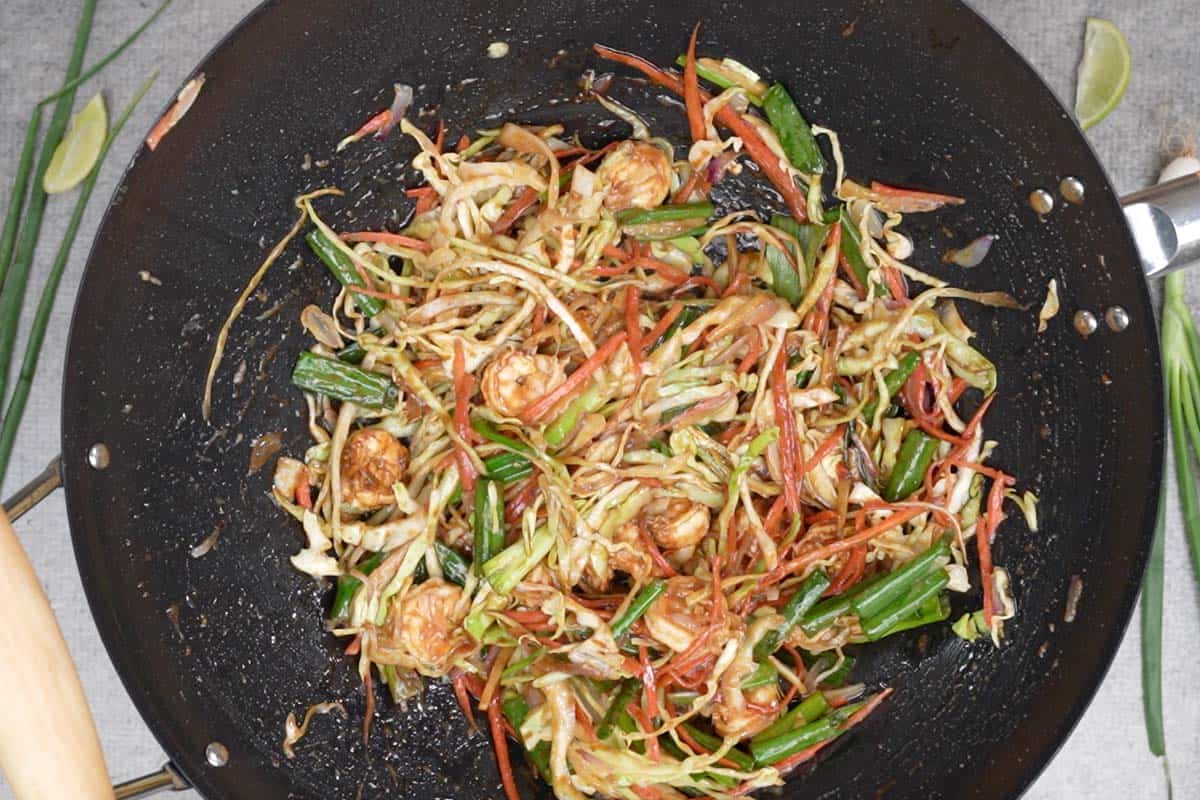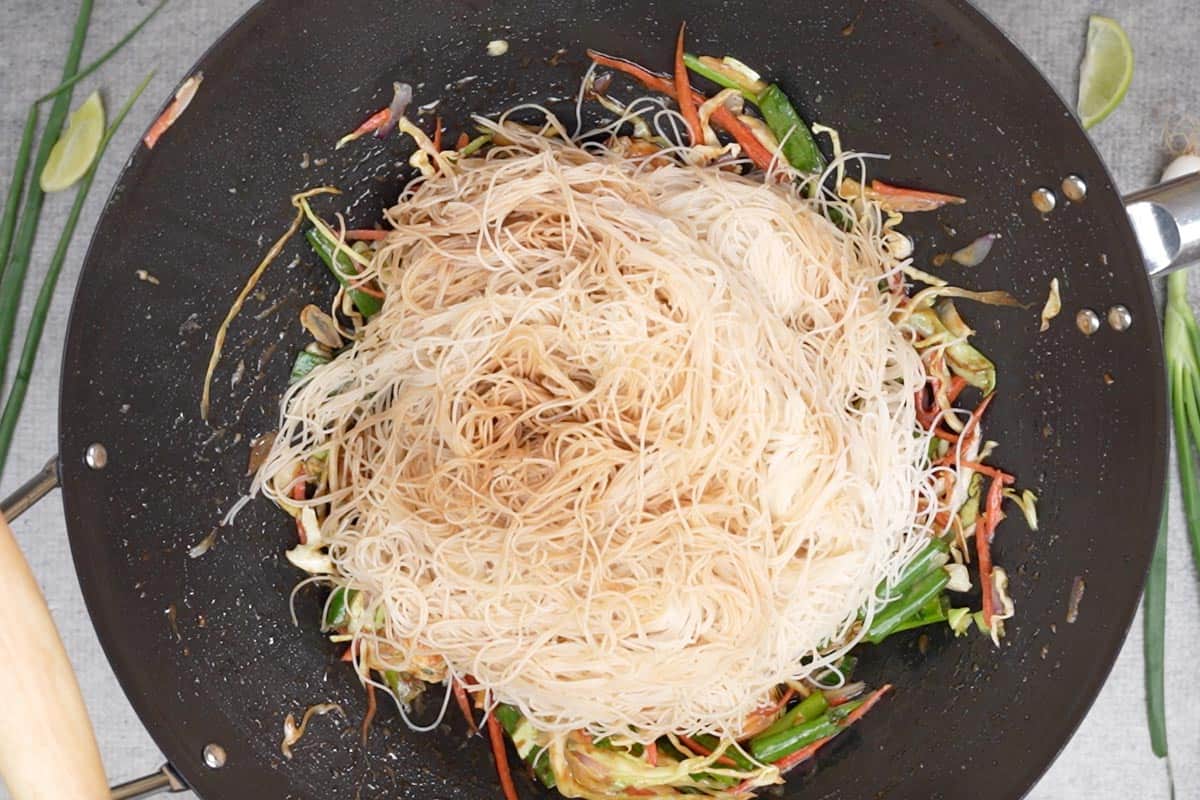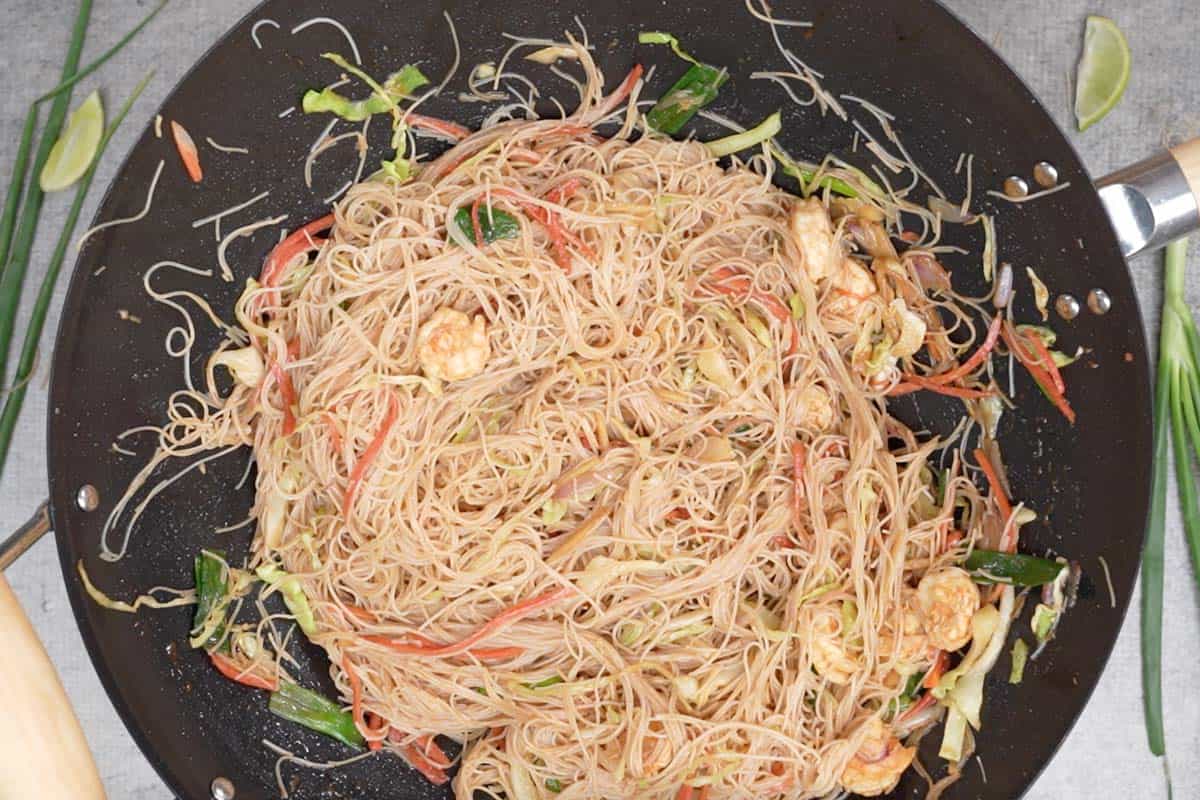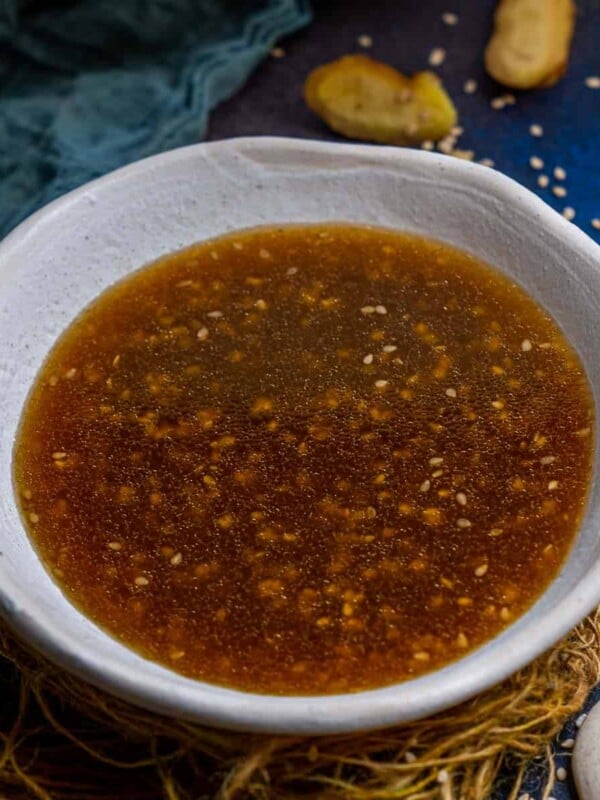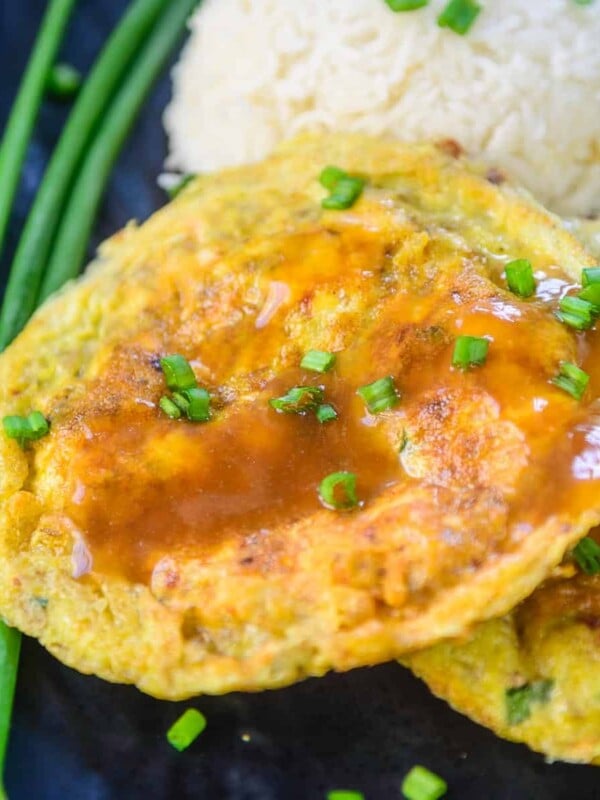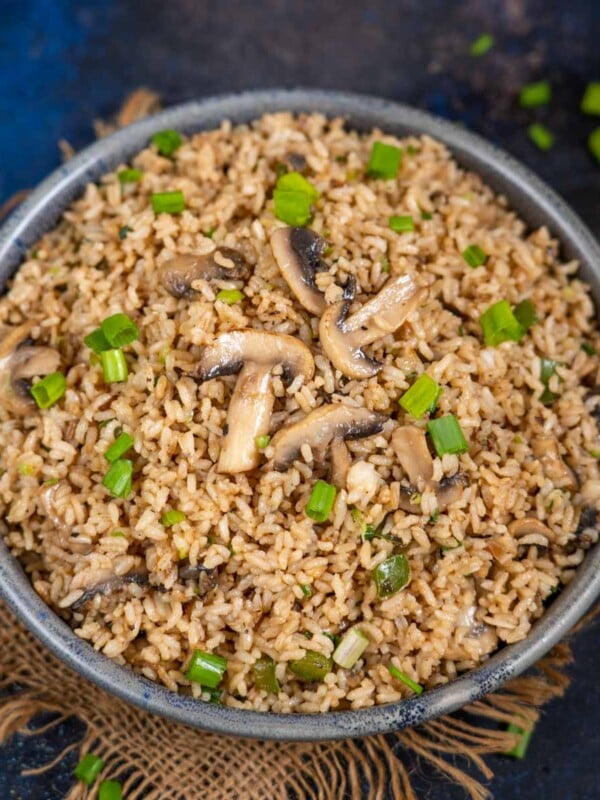on Feb 23, 2022, Updated Oct 10, 2023 Here are some more noodle recipes that you may like: Shrimp Chow Mein, Homemade Japanese Hibachi Noodles, Cantonese Pan Fried Noodles, and Vegan Pad Thai Noodles.
What Are Mei Fun Noodles?
Mei Fun Noodles (Mai Fun) are thin, delicate, and slightly translucent white rice noodles commonly used in Chinese and Southeast Asian cuisine. Mei Fun also refers to the dishes made using these noodles. They are pre-cooked and dried in the manufacturing unit; you only need to soak or cook them until they are softened. Also known as rice vermicelli, rice noodles, or bee hoon, these naturally gluten-free noodles are often stir-fried with vegetables and protein or used in soups.
About Shrimp Mei Fun Noodles
Shrimp Mei Fun Noodles, also called Shrimp Mai Fun, is a stir-fry made with rice noodles, sauces, veggies, and shrimp. It is a popular Asian dish, and many American Chinese restaurants offer it on their menus. It is popular as Singapore noodles in Chinese take-out restaurants, but if you go to Singapore, you will be surprised to know that this noodle dish is not Singaporean. Making shrimp mei fun noodles at home is super easy. It comes together in under 30 minutes. The homemade dish tastes much better than the take-out version, and you can customize it to your taste. This mei fun noodle with shrimp is a complete meal, perfect for lazy weekday dinners. You can serve a soup or an appetizer on the side to make it more filling. So next time you plan to eat Chinese food, make these chow fun noodles at home and enjoy them with the whole family. Check out my Chicken Mei Fun Noodles recipes as well.
Serving Suggestions
Shrimp chow mein fun is a filling meal on its own. Serve it for lazy weekday dinners, potlucks, game or movie nights, or even for your weekend brunch. I used dried rice vermicelli noodles, but you can use fresh ones if they are available.
For The Shrimp
You can use fresh or frozen cleaned and deveined shrimp. If using frozen shrimp, bring them to room temperature before adding them to the wok. Shrimp are coated with cornstarch, oyster sauce, water, Shaoxing wine, white pepper, and oil. Shaoxing wine can be replaced with white wine vinegar. You can add a crumbled chicken stock cube to the recipe for added flavor. I used medium-sized shrimp, but you can use small or large ones too. The time of cooking will slightly differ.
For Remaining Recipe
In addition to the abovementioned ingredients, you will need fresh ginger, shallots, carrots, green cabbage, scallions, oil, dark soy sauce, sesame oil, white pepper, salt, and water. Use tamari in place of soy sauce for a gluten-free recipe. I have used shallots, carrots, and cabbage, but you can add more veggies like bell peppers, snow peas, bean sprouts, napa cabbage, green beans, mushrooms, corn kernels, baby corn, or Asian greens. It’s a great way to use up all the leftover veggies in your fridge. You can replace shrimp with tofu cubes for a vegetarian version. Eggs, chicken, beef, pork, or other seafood can also be added to this recipe. Fish sauce, hoisin sauce, brown sugar, and red chili peppers can also be added to this recipe to perk up its taste. Do not cook or oversoak the noodles. You want them to be al dente, meaning they should have a nice bite. Rinse the cooked noodles with cold water to stop the cooking process. Then drain well and toss with soy sauce and oil. Make sure to have all your ingredients prepped and measured before you begin cooking because the cooking process moves quickly once it starts. Rinse the noodles with cold water to stop cooking; otherwise, they will become mushy. Drain thoroughly to get rid of excess water. In a large bowl, mix the noodles with 1 tablespoon of oil and 2 teaspoons of dark soy sauce until evenly coated. Set aside.
2 teaspoon cornstarch 1 tablespoon oyster sauce 1 tablespoon Shaoxing wine ¼ teaspoon white pepper powder 1 teaspoon oil
Marinate for 20 minutes. Heat a large wok on high heat until very hot. Add 3 tablespoons of oil. Once the oil is hot and shimmery, add 2 tablespoon julienned ginger and 4-5 shallots (peeled and thinly sliced). Stir-fry for 10 seconds. Note – If using small shrimp, cook for 2 minutes; if using large shrimp, cook for 4 minutes. Now add the following veggies and stir-fry for another 30 seconds.
1 medium carrot (julienned) 5 oz (150 g) shredded cabbage 2 scallions (cut into 2-inch pieces)
1 tablespoon dark soy sauce ½ teaspoon sesame oil ¼ teaspoon white pepper powder ½ teaspoon salt
Check for salt and sauces and add more to taste. Serve hot. You can also serve an Asian soup or appetizer on the side to make it more filling. I love to serve it with soups such as Thai Pumpkin Curry Soup, Chicken Clear Soup, or appetizers like Hibachi Chicken, Gochujang Tofu, or Hunan Chicken.
Storage Suggestions
Singapore Mei Fun will last in the fridge for 3-4 days when stored in a clean and dry, airtight container. Cool them completely before transferring them to the container. You can also freeze the noodles for up to 2 months. However, the texture might change slightly upon thawing and reheating. When you’re ready to eat the noodles, you can reheat them in a microwave, steamer, or pan over medium heat. If the noodles seem dry, add a little water to help rehydrate them.
- Microwave: Place the noodles in a microwave-safe dish and cover with a microwave-safe lid or cling film. Make sure to leave a small corner open to allow steam to escape. Microwave on medium power for 1-2 minutes, stirring halfway through to ensure even heating.
- Stovetop: Heat some oil in a non-stick pan over medium heat. Add the noodles and stir-fry until heated through. If the noodles are clumped together, splash some water over them.
- Steamer: Place the noodles in a heatproof dish and steam for about 5 minutes or until heated through.
Asian Sesame Ginger Dressing
Vegetables In Hot Garlic Sauce
Egg Foo Young
Mushroom Fried Rice

